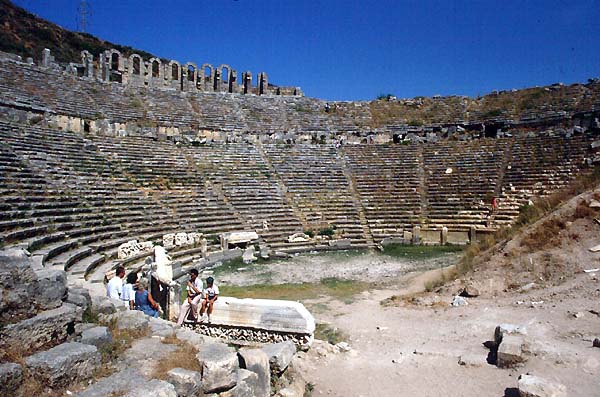

ARCH OF TIBERIUS AT ARAUSIO FREE
The entertainment offered was open toĪll and free of charge. Was the use of stage machinery, to keep commoners entertained. Magnificent stage sets became very important, as Poetry readings and the farce was the dominant form of entertainment, much of Of distracting them from all political activities. Major role in the life of the citizens, who spent a large part of theirįree time there, the theatre was seen by the Roman authorities not onlyĪs a means of spreading Roman culture to the colonies, but also as a way Secundanorum Arausio: "the Julian colony of Arausio established by the soldiers of the second legion") which was founded in 40 BCE. It is one of the best preserved of all the Roman theatres in the RomanĬolony of Arausio (or, more specifically, Colonia Julia Firma The mills apparently operated from the end of the 1st century until about the end of the 3rd century.Īncient Roman theatre in Orange was built early in the 1st century AD. There are substantial masonry remains of the water channels and foundations of the individual mills, together with a staircase rising up the hill upon which the mills are built. The mill consisted of 16 waterwheels in two separate descending rows built into a steep hillside. There are two aqueducts which join just north of the mill complex, and a sluice which enabled the operators to control the water supply to the complex. Within ten miles north of Arles at Barbegal, near Fontvieille, where the aqueduct arrived at a steep hill, the aqueduct fed two parallel sets of eight water wheels to power a flourmill. Around the time of working on Cafe Terrace at Night, van Gogh wrote to his brother, Theo van Gogh, explaining that he had a "tremendous need for, shall I say the word - for religion," with direct reference to the painting.Īt the Barbegal aqueduct and mill, a Roman watermill complex located near Arles, described as "the greatest known concentration of mechanical power in the ancient world." It was built to supply drinking water from the mountain chain of the Alpilles to Arles (then called Arelate) on the Rhône River. Before devoting his attention to painting, Van Gogh had expressed a desire to "preach the gospel everywhere," and his father, Theodorus van Gogh, was a pastor for a Dutch Reformed church. A religious allusion wouldn't be too out of character for van Gogh. A shadowy figure slipping through the doorway may symbolize Judas.
ARCH OF TIBERIUS AT ARAUSIO PLUS
In fact, a close study of the painting reveals that the main characters include one central figure with long hair surrounded by twelve individuals, plus a cross shines in the background of the composition, and van Gogh has included additional cross-like shapes throughout the artwork. He had painted the café terrace scene on location rather than from memory.Jared Baxter argues the painting contains allusions to The Last Supper by Leonardo. Starry Night Over the Rhone and Starry Night complete the trilogy. Café Terrace at Night is one of three Arles paintings that feature Van Gogh's distinctive star-filled sky. Van Gogh's C afé Terrace at Night and the site today with Drake Winston, now renamed the Café Van Gogh. Reflecting on Van Gogh's works of the Langlois Bridge Debora Silverman, author of the book Van Gogh and Gauguin: The Search for Sacred Art comments, "Van Gogh's depictions of the bridge have been considered a quaint exercise in nostalgia mingled with Japonist allusions." Van GoghĪpproached the making of the paintings and drawings about the bridge inĪ "serious and sustained manner" with attention to "the structure,įunction, and component parts of this craft mechanism in the landscape." This was the first of several versions he painted of the Langlois Bridge

Study of women washing clothes near the Langlois Bridge about mid-Marchġ888 and was working on another painting of the bridge about April 2. According to letters to his brother Theo, Van Gogh began a Langlois Bridge but as a result of structural difficulties, it wasįinally reassembled at Montcalde Lock several kilometres away from the The Fos Bridge wasĭismantled in 1959 with a view to relocating it on the site of the Structure which, in 1944, was blown up by the retreating Germans whoĭestroyed all the other bridges along the canal except for the one atįos-sur-Mer, a port on the Mediterranean Sea.

Inġ930, the original drawbridge was replaced by a reinforced concrete Réginel" but better known by the keeper's name as "Pont de Langlois". Outside Arles, the first bridge was the officially titled "Pont de


 0 kommentar(er)
0 kommentar(er)
